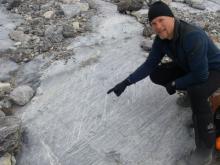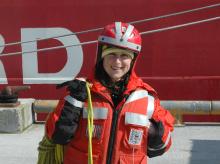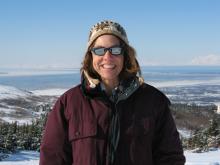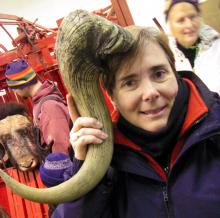CReSIS Greenland Ice Sheet Studies
What Are They Doing?
Much of our knowledge of past climate comes from ice cores drilled from the Greenland ice sheet. These records stretch back more than 100,000 years, but existing ice cores do not include clear records from the Eemian stage, the second-to-latest interglacial period, which occurred about 130,000 years ago. During this period, evidence indicates that temperatures were about 3-5 ˚C warmer than present, so more information would help us understand and predict how our climate is likely to evolve in the warming future.
Under the North Greenland Eemian (NEEM) ice drilling project, an international team of researchers worked to obtain complete and undisturbed layers of ice from the Eemian by drilling a new core in northwest Greenland. Choosing the right spot to drill was critically important to the project’s success. NEEM scientists collaborated with researchers from the Center for the Remote Sensing of Ice Sheets (CReSIS) at the University of Kansas. The CReSIS team provided Radar Echo Sounding profiles over the ice sheet, which provided information on ice layer thickness and variability over time and space and helped NEEM researchers select the drill site.
The NEEM team began deep drilling at the site in 2009, and CReSIS scientists were able to compare the detailed information collected from the core with their radar data in order to better understand variations in snow accumulation and other environmental parameters. This helped improve the accuracy of the Radar Echo Sounding profiles.
Lawrence, KS
United States








